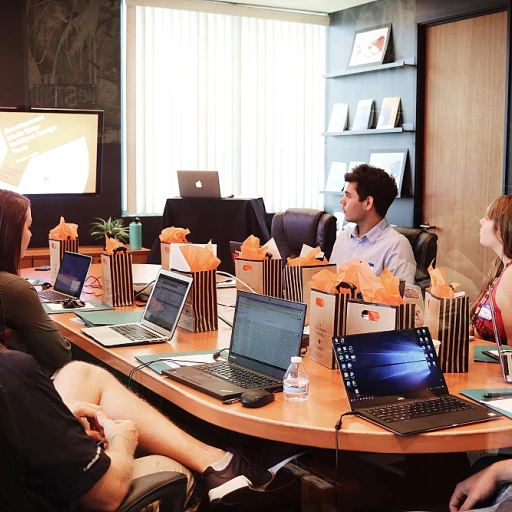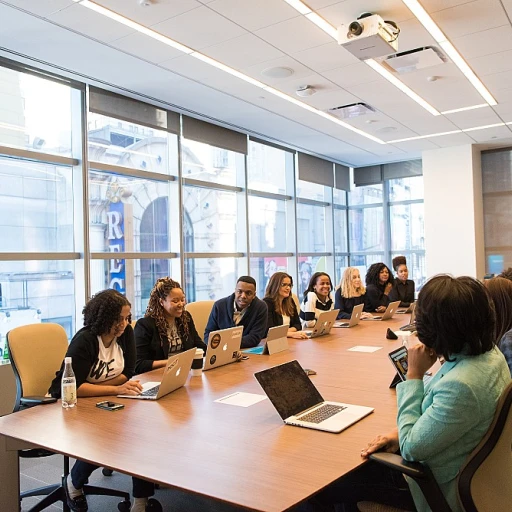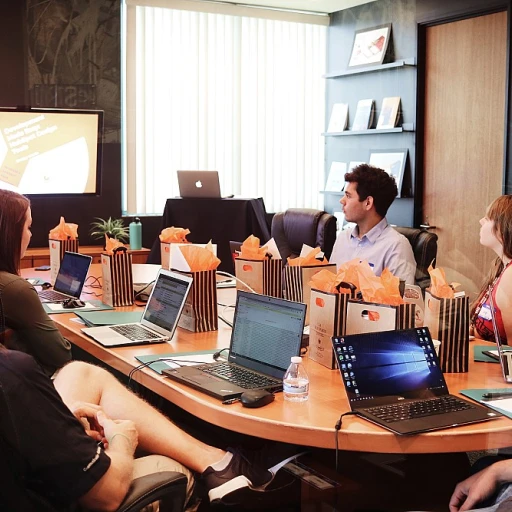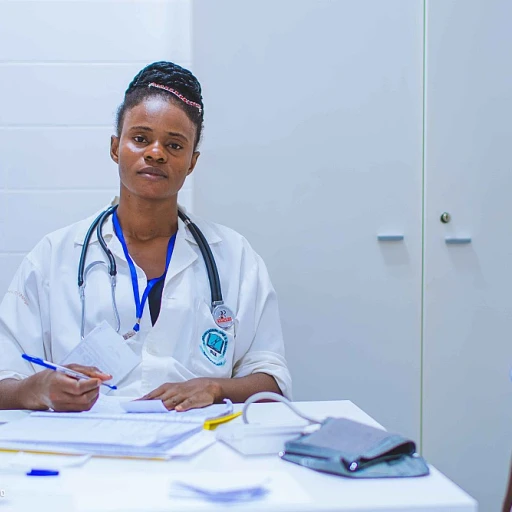
Understanding Reskilling in the Modern Workplace
Embracing Change Through Skill Enhancement
In today's rapidly evolving work environment, reskilling has emerged as a pivotal component in maintaining career relevance and driving professional growth. As industries pivot towards technological advancements and new market demands, employees are increasingly required to adapt their skills to align with these changes. This shift necessitates a focus on both professional development and personal development, underscoring the importance of setting clear, actionable development goals.
Reskilling not only benefits individual career trajectories by enhancing communication skills and leadership, but it also significantly contributes to improved work performance within organizations. By identifying specific skills that need enhancement, professionals can embark on a journey of setting well-defined performance goals that are both short term and long term in nature.
It's essential to view reskilling as a strategic development plan that aligns with professional goals and supports career growth. Whether it involves mastering new public speaking techniques, improving time management, or developing project management prowess, these skill upgrades reinforce an individual's role and capabilities within their work environment.
The process begins with goal setting, laying the foundation for measurable and time bound targets. This empowers employees to track their progress, receive constructive feedback, and make necessary adjustments. As a result, employees can enjoy greater professional development and personal satisfaction in their roles.
Through deliberate skill acquisition and focusing on concrete development goals, professionals are better positioned to thrive in their careers. For insights on enhancing skills effectively to boost productivity, consider exploring this strategic approach to reskilling.
Identifying Your Development Goals
Clarifying Your Path to Professional Growth
Identifying your development goals is a crucial step in the reskilling journey. Whether you're aiming for personal development or professional growth, setting clear and achievable goals can significantly enhance your career trajectory. The process begins with a thorough self-assessment to understand your current skills and areas that need improvement.
Self-Assessment and Feedback
Start by evaluating your current skill set and performance. Consider seeking feedback from colleagues or supervisors to gain a broader perspective on your strengths and weaknesses. This feedback can help you pinpoint specific areas for improvement, such as communication skills or project management abilities.
Setting SMART Goals
Once you have a clear understanding of your development needs, it's time to set goals that are Specific, Measurable, Achievable, Relevant, and Time-bound (SMART). This approach ensures that your goals are realistic and aligned with your long-term career aspirations. For instance, if you aim to improve your leadership skills, a SMART goal could be to complete a leadership training course within the next six months.
Aligning Goals with Career Objectives
It's essential to align your development goals with your overall career objectives. Consider how each goal contributes to your professional growth and long-term career path. For example, if your career goal is to move into a management position, focus on developing skills like team management and strategic planning.
Creating a Development Plan
After setting your goals, create a detailed development plan that outlines the steps you need to take to achieve them. This plan should include specific actions, resources needed, and a timeline for completion. Regularly review and adjust your plan to stay on track and accommodate any changes in your career path.
For more insights on setting effective development goals, visit our comprehensive guide.
Examples of Effective Development Goals
Setting Clear and Effective Development Goals
When considering development goals, both personal and professional, it's crucial to have a clear understanding of what constitutes effective and meaningful objectives. Whether you're aiming for enhanced communication skills or aiming to improve project management, setting priorities and focusing on achievable targets can significantly boost your growth trajectory.
- Professional Skills: Focus on honing skills that are directly related to your career and current job responsibilities, such as public speaking or time management.
- Personal Development: Improving emotional intelligence and leadership capabilities can enhance your overall effectiveness and work satisfaction.
- Performance Goals: Identify areas where your work performance could improve. Setting clear metrics for evaluation can turn feedback into actionable development goals.
- Career Growth: Whether striving for a promotion or preparing for a career switch, define your long-term career goals and determine what skills will help you achieve them.
Understanding the importance of development goals in the professional context can pave the way for structured growth. Goals that are time bound and measured using specific criteria like the SMART framework (specific, measurable, achievable, relevant, time-bound) often prove to be more effective in real-world scenarios.
To sum up, aligning personal ambitions with the organizational mission and creating a well-thought-out development plan can greatly assist employees in progressing from short-term achievements to long-term success. This approach not only helps with immediate professional growth but also lays the foundation for sustained career advancement over time.
Strategies for Achieving Development Goals
Crafting Strategic Pathways to Success
- Set SMART Goals: One of the first steps to achieving your development goals involves setting SMART goals—Specific, Measurable, Achievable, Relevant, and Time-Bound. This method not only provides clarity but also streamlines your focus, ensuring every goal is attainable within a given timeframe.
- Leverage Feedback: Feedback plays a crucial role in professional growth. Regular feedback sessions with mentors or supervisors can open pathways for fine-tuning skills and aligning with performance goals. Constructive criticism is invaluable for continual improvement and personal development.
- Enhance Communication Skills: Developing strong communication skills is fundamental in many workplace roles. Engage in activities that boost verbal and non-verbal communication, like public speaking workshops or collaborative projects, which can significantly improve work performance and facilitate better team interactions.
- Invest in Training: Structured training programs and professional development courses tailored to your needs are key. These should align with the long-term vision of your career goals, enabling employees to upgrade their skills in tandem with organizational growth.
- Embrace Time Management Techniques: Prioritizing tasks and managing your time efficiently can lead to substantial personal and professional development. Tools such as project management software aid in detail-oriented work and enhance overall productivity.
Strategizing for the realization of development goals is not a solitary endeavor. Continued professional development involves collective support, open communication, and well-defined objectives. Employees should also establish clear pathways for career advancement, considering both short-term and long-term aspirations for professional growth.
Overcoming Challenges in Reskilling
Overcoming Obstacles in Skill Development
Reskilling in today's work environment presents unique challenges that can hinder progress toward one’s development goals. Recognizing and addressing these obstacles is crucial for employees and leaders alike. Here, I’ll outline some common challenges and provide strategies to overcome them.
Lack of Clear Communication and Feedback
One common hurdle to skill development is the absence of effective communication skills and feedback mechanisms. Without clear goals and expectations, employees may struggle with uncertainty in their professional development journey. Open channels of communication help clarify performance goals and allow for constructive feedback that can drive professional growth. Regular check-ins between employees and management are essential to promptly address any potential roadblocks.
Limited Resources and Support
Another challenge is the scarcity of resources and support required for development. This can include access to learning materials, time for skill-building exercises, or even a lack of mentorship. Organizations should ensure that they provide the necessary tools and create an environment that supports continuous learning. Leadership and project management can play a significant role in this aspect by offering mentorship programs and allowing flexible work schedules that incorporate time for development activities.
Resistance to Change
Change can be daunting, leading to resistance from employees who are apprehensive about stepping out of their comfort zones. Overcoming this resistance involves fostering a culture that emphasizes the benefits of personal development and professional growth. Encourage a mindset shift by highlighting successful examples of reskilling within the organization and sharing stories of long-term career success.
Setting Realistic and Time-Bound Goals
The process of setting unrealistic goals can result in frustration and stagnation. Implementing the SMART goals framework, which stands for Specific, Measurable, Achievable, Relevant, and Time-Bound, is essential for crafting attainable development goals. This approach aids in breaking down larger objectives into manageable steps, making it easier for employees to track their progress and stay motivated.
By employing these strategies, individuals and organizations can effectively overcome challenges in the reskilling process, ultimately leading to improved employee performance and satisfaction in their career paths.
Measuring Success and Progress
Assessing Progress and Success in Reskilling
Monitoring your progress and successes in reskilling is crucial for ensuring that your development goals are achieved effectively. The key is to establish clear, measurable indicators that align with your personal and professional growth objectives. Here are some steps to consider:- Set Clear Performance Goals: Begin by defining specific, measurable, achievable, relevant, and time-bound (SMART) goals. This allows you to have a clear understanding of what success looks like in both short term and long term development goals.
- Regular Feedback: Incorporate regular feedback sessions with your manager or peer group. Constructive feedback provides insights into areas where you are excelling and aspects that need further improvement. Effective communication skills play a crucial role in these discussions, helping you to understand and act on the feedback received.
- Utilize Performance Metrics: Evaluation of professional development can be achieved through metrics related to job performance, skills acquisition, and leadership development. These metrics offer tangible evidence of progress and highlight areas where additional effort is needed.
- Reflect on Personal Development: Personal growth can sometimes be subjective, but it is essential to reflect on how the reskilling process has influenced your work and personal life. Consider aspects such as increased confidence in public speaking or better management of your time.
- Adapt Your Development Plan: Based on your evaluations and feedback, continuously refine your development goals and strategies. This adaptability ensures your goals remain aligned with your evolving career aspirations and workplace demands.













